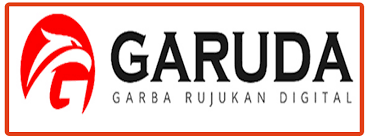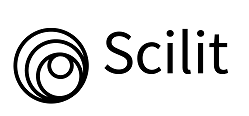PROFIL TEKNOLOGI BUDIDAYA BANDENG (Chanos chanos) DI PUJUT KABUPATEN LOMBOK TENGAH
The Profile Of Milkfish Cultivation Technology (Chanos Chanos) In Pujut Central Lombok Tengah District
DOI:
https://doi.org/10.59896/qalbu.v2i2.115Keywords:
technological profile, milkfish, cultivation technical, business feasibilityAbstract
Milkfish cultivation with traditional technology in Mertak Village only lasts one cycle per year. The limited cycle of milkfish cultivation causes it to be less desirable, even though the profit level is quite high. For this reason, this study aims to study the key variables of cultivation and estimate the feasibility of the milkfish cultivation business. This research was conducted in Mertak Village, Central Lombok. used in this research is descriptive survey, and data collection using census method. Data analysis uses Regression-Correlation which aims to predict the determination / influence of the independent variable (X) on the dependent variable (Y). The results of the technical evaluation of milkfish cultivation in the village of Mertak amounted to 563 kg/ha/cycle with the size of the milkfish harvesting 8 individuals/kg. In addition, averange body weight (ABW) of 125 grams/individual was obtained, survival rate (SR) reached 53.68%, and FCR 0.23. The results of the business feasibility analysis show the value of the Benefit-Cost Ratio (B/C Ratio) = 2.218, which means that the milkfish cultivation business is feasible to continue because the B/C ratio is >1.0. The milkfish cultivation activities in Mertak Village, Pujut Subdistrict, Central Lombok Regency have followed the rules of good aquaculture practice (GAP). The milkfish farmers consistently run their business to increase pond productivity.
References
Arikunto, S. (1992). Prosedur Penelitian. Rineka Cipta. Yogyakarta.
Asrial, E. (2001). Penyusunan Model Pembangunan Udang Sebagai Sentra Perekonomian Desa Pantai (Kasus: Kecamatan Suppa, Kabupaten Pinarang, Sulawesi Selatan. TESIS. Program Magister Perencanaan dan Kebijakan Publik Fakultas Ekonomi Universitas Indonesia. Depok.127+19 hal.
Asrial, E. (2015). Model Pengelolaan Sumberdaya Ubur-Ubur Konsumsi crambione mastigophora di Teluk Saleh, Nusa Tenggara Barat. [Disertasi]. Program Doktor ilmu perikanan dan kelautan program pasca sarjann fakultas perikanan dan ilmu kelautan universitas brawijaya. Malang. 362 x xl hal.
Gujarati, Damodar, (2003) Ekonomi Dasar. Terjemahan: Sumarno Zain, Jakarta: Erlangga.
Hasan, M.Iqba. (2002). Pokok-pokok Materi Metodelogi Penelitian dan Aplikasinya, Ghalia Indonesia, Bogor
Musyafak, A dan T. M. Ibrahim. (2005). Strategi Percepatan Adopsi dan Difusi Inofasi Pertanian Mndukung Prima Tani, Analisis Kebijakan Pertanian. 3 (1): 20-37..
Purnomowati, I. (2006). Bandeng Duri Lunak.Kanisius. Yogyakarta.
Purnomowati, I., Hidayati, D., dan Saparinto, C. (2007). Ragam Olahan Bandeng. Kanisius. Yogyakarta.
Susanto, Eko. (2010). Pengolahan Bandeng Duri Lunak (Channos channos Forsk).Semarang :Program Studi Teknologi Hasil Perikanan, Jurusan Perikanan, Fakultas Perikanan dan Ilmu Kelautan Universitas Diponegoro Semarang Setyaningsih, Dwi., Anton Ariyantono, Maya Puspita S. 2010. Analisis Sensori. IPB Press. Bogor.
Wandansari,N.D.. (2013). “ Perlakuan Akuntansi atas PPH Pasal, 21 Pada PT. Artha Prima Finance Kotamobagu”. Universitas Sam Ratulangi Manado, Jurnal Perpajakan.
Downloads
Published
How to Cite
Issue
Section
License
Copyright (c) 2024 Tohirman Tohirman, Hamid Hamid, Evron Asrial, Azhari Tarmizi

This work is licensed under a Creative Commons Attribution-ShareAlike 4.0 International License.



















